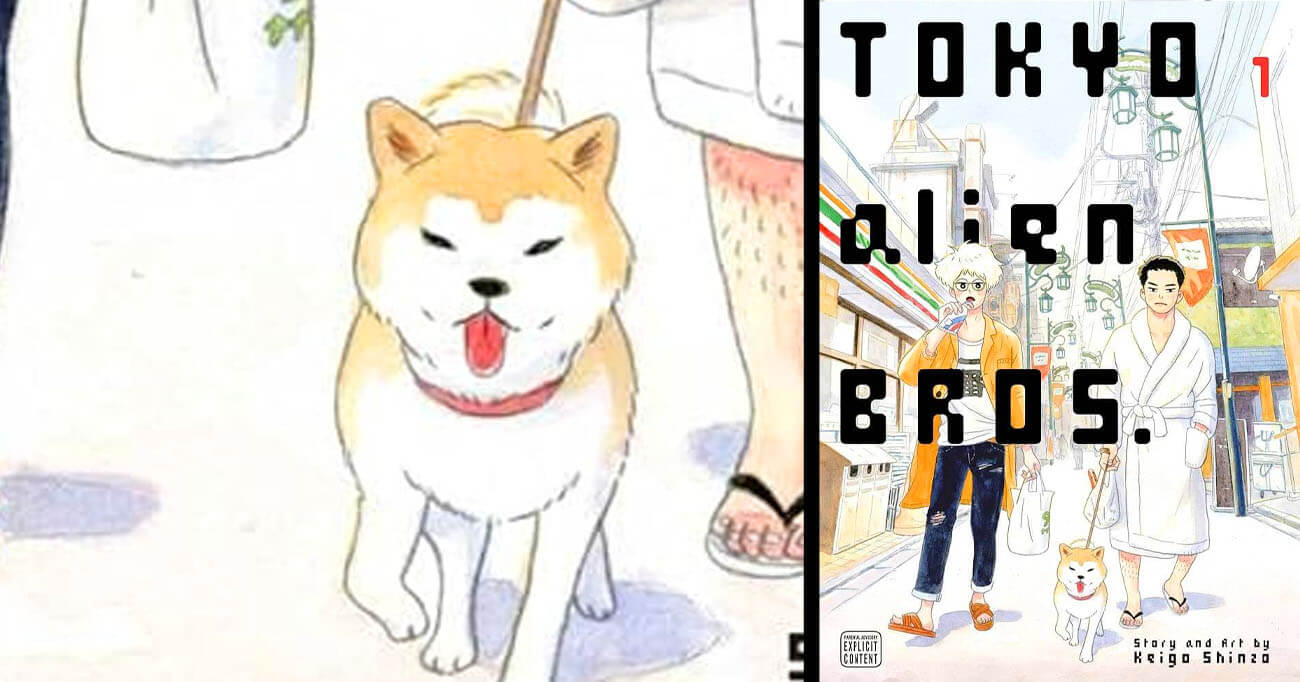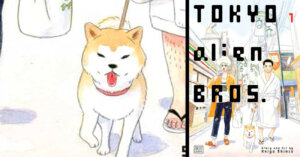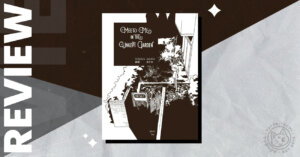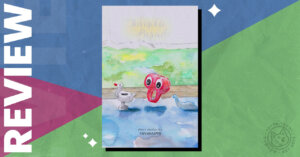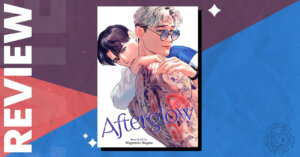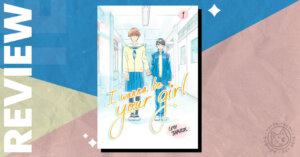Fuyonosuke is a ladies man who loves taking it easy. By comparison, his brother, Nasutaro, is a stick in the mud. They couldn’t be more different, except for the secret that binds them: they’re both aliens! In fact, their planet is near capacity, and Earth is a promising place to invade. But Fuyonosuke’s in no hurry to do so because Nasutaro has a long way to go before he adapts to terrestrial life. They can start thinking about taking over the planet then.
Originally drawn in 2015, Tokyo Alien Bros is the newest manga to be published in English by manga artist Keigo Shinzo. He specializes in what I like to call “hangout comics,” slice of life stories where likable characters engage in mundane activities. Shinzo is particularly good at scenes of male bonding, especially here. While Fuyonosuke and Nasutaro are aliens rather than humans, they have a certain chemistry that makes their “brotherhood” believable.
Shinzo is also keenly interested in what it means to “hang out.” Hirayasumi, his most recent manga series, asks the reader whether a life of quiet mediocrity following failure is really any more fulfilling than the frantic pursuit of ambition. That said, Tokyo Alien Bros is weighted more towards comedy by comparison. Yet it is also engaged with what Nasutaro believes to be Earth’s frivolousness. Are dogs, frisbees, and dating really as pointless as Nasutaro believes? Or is that pointlessness the key to their importance? By the end of the first volume, Shinzo has come down in favor of pets being fluffy and warm.
Fish Out of Water
Even if Tokyo Alien Bros is less dramatic than Hirayasumi, Shinzo’s art is as fantastic as usual. He can draw pretty much anything: soft-faced humans, cluttered bedrooms, and animals that hit that sweet spot between realism and caricature. At other times he’ll pull an outrageous flex, like sending the alien brothers on a world tour that requires him to reproduce various international landmarks with the same specificity and details as his Tokyo illustrations. His alien designs are comparatively simple, but even then I quite like his diamond-shaped spaceships as well as the strangely brutalist interstellar communication device in Fuyonosuke’s house.
The series is more grotesque than I’m used to from Shinzo’s past work. In one early scene, Nasutaro accidently spills ramen on himself and begins to melt. Just before he runs away, you can see the roots of his teeth poking through holes in his chin. However, I was most shocked by a somewhat sexual scene in the very first chapter. Fuyonosuke wins a girl’s heart by giving her just what she wants: letting her pee on his face. These flourishes won’t be for everybody, but they certainly give the series an unique vibe that sets it apart from Shinzo’s other comics.
A running theme in Tokyo Alien Bros is that while Nasutaro is the fish out of water, Fuyonosuke doesn’t quite understand humans either. He buys cat carriers instead of backpacks, hits badminton birdies into space, and walks out on his girlfriends without a second thought. As a result, there’s a certain coldness running through the series that undercuts what might otherwise be a “cozy” comedy.
Taking It Easy
Still, Shinzo finds time for sentimentality. His most effective trick is giving Fuyonosuke and Nasutaro telepathy. All they have to do is touch a human to hear their thoughts. In this way Tokyo Alien Bros lets the reader in on human perspectives. One young woman has her heart crushed on a date with Fuyonosuke; an older woman lashes out at her neighbors but secretly misses her old dog. The alien brothers do their best to fulfill their wishes. Yet they can’t help but run afoul of the contradictory needs of their very human neighbors.
My sole criticism of Tokyo Alien Bros is that it doesn’t necessarily represent Keigo Shinzo at his best. For long-form character development, you should really read Hirayasumi. For concentrated greatness, his early and as-of-yet untranslated 2012 masterpiece Our Eruption Festival remains the standard. Still, I like Tokyo Alien Bros a lot but not quite as much as either of these. It reads to me as Shinzo’s effort to package his style in an accessible format for wide readership.
Then again, if you prefer comedy to long-form drama, you might actually prefer Tokyo Alien Bros. It demonstrates that Shinzo has some facility for horror and action even though his heart lies elsewhere. The series is also a mere three volumes compared to Hirayasumi’s eight and counting. Once all three volumes are out, you can collect the series without breaking the bank.
Verdict
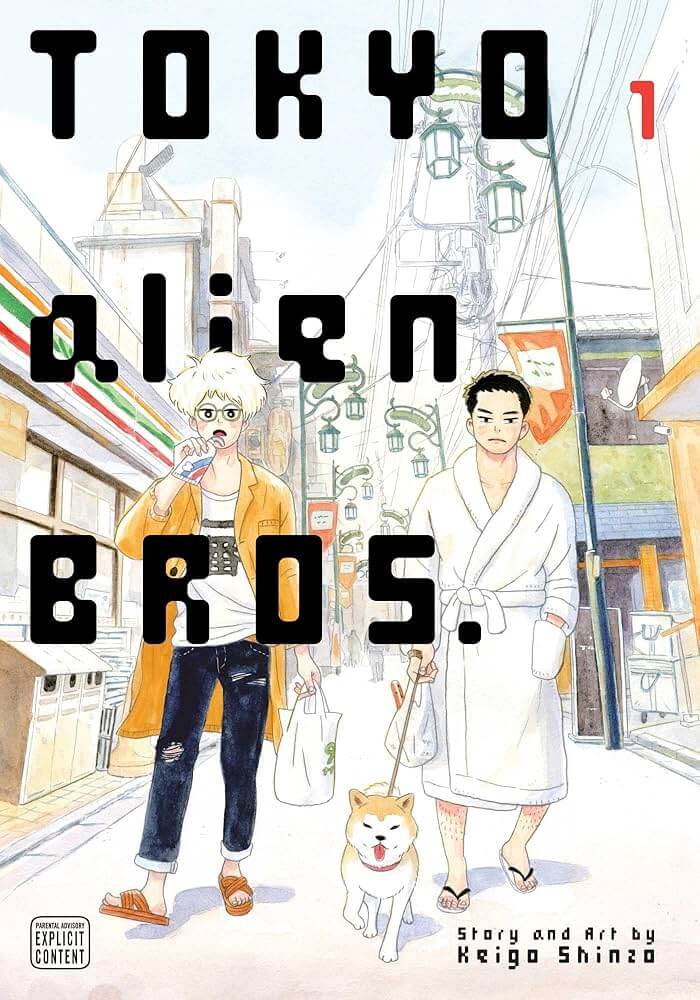
Tokyo Alien Bros is further proof (if any more was needed) that Keigo Shinzo has what it takes to create a good series. It’s a funny and readable comic that plays to a wide audience without compromising the artist’s eccentricities. In these troubled times, if you ever want to take a moment and “hang out,” Ruyonosuke and Nasutaro have your back.
You can purchase Volume 1 of Tokyo Alien Bros on Amazon, Bookshop and Barnes and Noble.
If you liked Tokyo Alien Bros, you may like…
Credits
Story and Art: Keigo Shinzo
Translation: Casey Loe
Touch-Up Art & Lettering: Elena Diaz
Design: Jimmy Presler
Editor: Holly Fisher
Published in English by VIZ Media
Thank you to Viz Media for the advance copy for review. Receiving this advance copy had no effect on the reviewer’s opinions as expressed here.
Article Editor: Bill Curtis
The Good
- Wildly engaging yet flavorful art
- Chill characters and vibes
- A serious weird streak
The Bad
- Less dramatic than Shinzo’s other works
- Asks that you take life at its speed instead of a faster pace

Featured Sponsor - JAST
The sweetest romance and the darkest corruption, the biggest titles and the indie darlings; for visual novels and eroge, there's nowhere better.
Big thank you to our supporters
From their continous support, we are able to pay our team for their time and hard work on the site.
We have a Thank-You page dedicated to those who help us continue the work that we’ve been doing.
See our thank you page